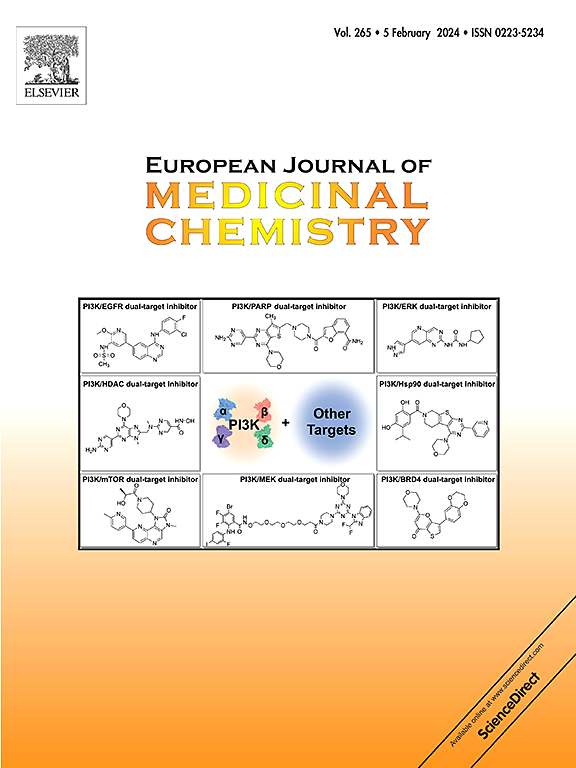Triptolide-based cleavable antibody-drug conjugates for pancreatic cancer
IF 5.9
2区 医学
Q1 CHEMISTRY, MEDICINAL
引用次数: 0
Abstract
Antibody-drug conjugates (ADCs) have emerged as a highly promising modality for the treatment of various tumors, including pancreatic cancer. Due to the modular nature of ADCs, their efficacy is heavily influenced by the choice of antibody, payload, and linker. Given the therapeutic potential of triptolide for pancreatic cancer, this study aims to harness triptolide as the cytotoxic payload to construct ADCs targeting pancreatic cancer. Silyl ethers were utilized for the first time as cleavable linkers to connect triptolide with an antibody. This is because silyl ethers can be easily synthesized and the rate of drug release can be regulated by modifying the silyl ether groups. The release profile of the resulting linkers was investigated. And considering the balance between cleavage and stability, one silyl ether-based linker was selected to prepare an ADC, named A10. Meanwhile, a traditional dipeptide linker-based ADC, A9, was synthesized for comparison. The ADC A10 demonstrated superior inhibitory effects compared to ADC A9, both in vitro and in vivo. A10 displayed targeted cytotoxicity against cells with high PD-L1 expression and demonstrated a bystander killing effect on cells with low PD-L1 expression. In vivo imaging studies indicated that fluorescently labeled A10 accumulated in tumor regions. Additionally, significant antitumor activities of A10 were observed against Panc 08.13-derived tumor xenografts.


基于雷公藤甲素的可切割抗体-药物偶联物用于胰腺癌
抗体-药物偶联物(adc)已成为治疗包括胰腺癌在内的各种肿瘤的一种非常有前途的方式。由于adc的模块化特性,其功效很大程度上受到抗体、有效载荷和连接体选择的影响。鉴于雷公藤甲素对胰腺癌的治疗潜力,本研究旨在利用雷公藤甲素作为细胞毒性有效载荷构建靶向胰腺癌的adc。硅醚首次被用作雷公藤甲素与抗体连接的可切割连接体。这是因为硅醚很容易合成,并且可以通过修饰硅醚基团来调节药物的释放速度。研究了所得到的连接剂的释放特性。考虑到劈裂性和稳定性之间的平衡,选择了一种硅醚基连接剂制备ADC,命名为A10。同时,合成了传统的基于二肽连接物的ADC A9进行比较。与ADC A9相比,ADC A10在体外和体内均表现出更好的抑制作用。A10对PD-L1高表达的细胞表现出靶向细胞毒性,对PD-L1低表达的细胞表现出旁观者杀伤作用。体内成像研究表明,荧光标记的A10在肿瘤区域积聚。此外,A10对Panc 08.13来源的肿瘤异种移植物具有显著的抗肿瘤活性。
本文章由计算机程序翻译,如有差异,请以英文原文为准。
求助全文
约1分钟内获得全文
求助全文
来源期刊
CiteScore
11.70
自引率
9.00%
发文量
863
审稿时长
29 days
期刊介绍:
The European Journal of Medicinal Chemistry is a global journal that publishes studies on all aspects of medicinal chemistry. It provides a medium for publication of original papers and also welcomes critical review papers.
A typical paper would report on the organic synthesis, characterization and pharmacological evaluation of compounds. Other topics of interest are drug design, QSAR, molecular modeling, drug-receptor interactions, molecular aspects of drug metabolism, prodrug synthesis and drug targeting. The journal expects manuscripts to present the rational for a study, provide insight into the design of compounds or understanding of mechanism, or clarify the targets.

 求助内容:
求助内容: 应助结果提醒方式:
应助结果提醒方式:


